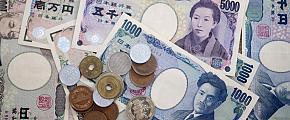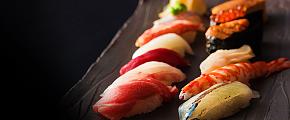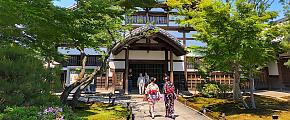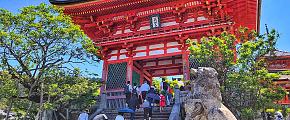Visit Japan in Winter: Activities and Travel Tips
It is an undeniable fact that winter is rather chilly in Japan. Still, I'd like to make a pitch for travel to Japan between December and March. One big plus is that there are fewer tourists and a wealth of activities that probably can't be enjoyed to the full outside the cold season. If you don't mind the cold, here are some unique activities and hands-on travel tips to have fun during your Japan winter trip.
Unique Things to Do in Japan in Winter
1. Watch Snow Monkeys Chilling out in Hot Springs
The Jigokudani Snow Monkey Park in Yamanouchi (2hr's transport from Tokyo) tops a photographer's dream places: wild Japanese Macaques spend much of the freezing winter days bathing or swimming in hot springs, some are even seemingly meditative!
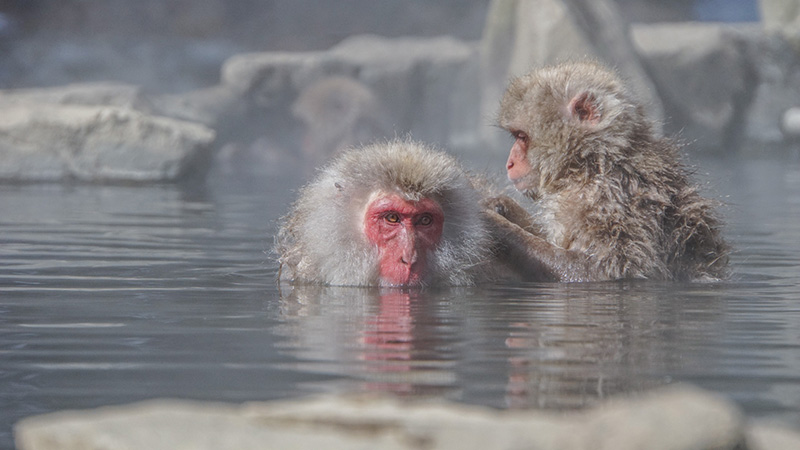 Snow Monkeys Taking a Soak in the Hot Spring
Snow Monkeys Taking a Soak in the Hot Spring
The natural park is in the forest, where provides the 160 monkeys with great habitat and rising hot spring pool for decades. Visitors can get really closed to the animals, such as sitting right next to them or taking detail pictures/movie, and they almost ignore their human guests while continuing their monkey life, which is quite interesting to watch. Naturally, it's not allowed to feed or touch them. There is no closing day in the park. Though in warmer days keepers throw grains to the water so that monkeys gather, the scene would be more attractive with white snow covering the area in the winter. To foreign visitors, it costs some efforts (if not a lot) to get to attractions in Japan, which leads to the need of having a private tour guide around to maximize their sightseeing time.
2. Boil in an Onsen and Get Steamy
Onsen is the Japanese word for a hot spring, which bubbles up everywhere for hundreds of years. There is nothing like taking a hot bath in an onsen on a cold winter's day-not just to experience beneficial physical effects of different onsen waters, but also to enjoy the natural settings, especially if you're in a snowy place seeing snowflakes falling from the sky.
Since animals have learned the benefits of a good soak, why won't you? Not far from the snow monkey park there are spa towns offering nice wooden ryokan and bathhouses, among which Shibu Onsen is gold. To the local, it's a great way to pass time contemplating or socializing in a tub of hot thermal water.
Be aware that Japanese onsens are public bath (typically for the same gender) and taken without any clothes. Visitors who have large or very visible tattoos will be refused admittance to the onsen while small tattoos are possible to be covered with a waterproof bandage.
3. Taste Winter Specialty
So, now you need to grab some grub and a pint or two. One dish you must try is nabe, a traditional Japanese hot pot is mainly eaten during the cold season. A nabe is usually prepared by one-pot cooking, including many ingredients such as meat, seafood, mushrooms, and vegetables. The Japanese believe that the staple winter food can warm up your entire body after eating it. About more than 100 different types of nabe are available depending on the region, the soy sauce based broth and ingredients. The most popular nabes are Yosenabe (everything in a pot), Yudofu (delicious tofu) and Chanko (with high-calorie ingredients). Another great thing about eating in Japan is the hot drinks from vending machines. Yes, they are literally warm, tasty, with a red label underneath and say "hot drink" while the regular ones have a blue label.
4. Ski the Finest Ski-Slopes
Mountains consist of 70% of Japan's land area and the coldest Siberian air mass sends huge amounts of fresh powder snow each winter, making Japanese ski grounds among the best and most reliable in the world. Comparing with prices of resorts in Europe and America, skiing in Japan means great value thanks to the weak yen.
The must-ski route in Japan includes Niseko in Sapporo (1.5hrs from Tokyo by air), where is dotted with four premier ski resorts that span over 800 skiable hectares and offer wide snow sports that cater to all levels from beginner to expert. The popularity of Niseko with international skiers results in an increase of owning second homes here, creating more dining options and nightlife than other slopes. If you prefer to stay closer to Tokyo, Nagano is the other spot worth going: top-class ski fields and onsens are all packed within the area. By the way, the Jigokudani Snow Monkey Park is within reachable distance too!
5. Attend Winter Festivals & Events
Though Japan's winter appears to be daunting, there are many winter-specific festivals that take advantage of the season's elements to encourage people to explore outside. Here are a few events I hope you won't miss at least one of any.
- ★★★★★ Sapporo Snow Festival:
Japan's largest snow festival held in Sapporo every February 5 – 11 to display epic snow art and ice sculptures.
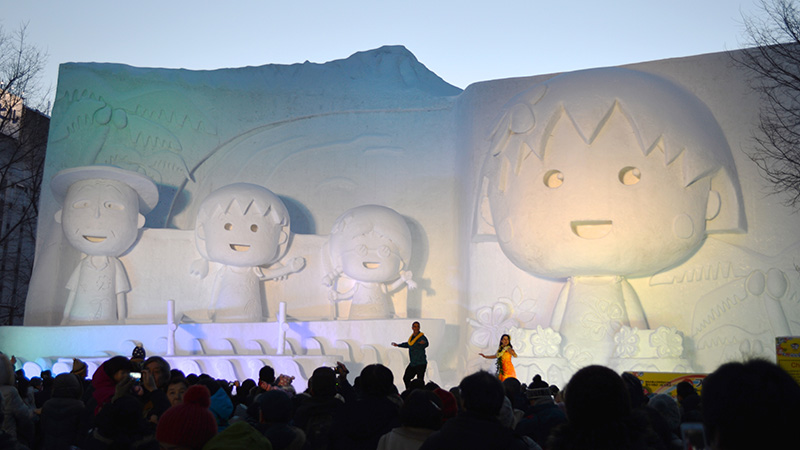 Sapporo Snow Festival
Sapporo Snow Festival
- ★★★★Shirakawago Winter Light-Up:
Snow-capped farmhouses are illuminated in an idyllic winter landscape in Shirakawago (near Takayama) on several dates in January and February. The peaceful village of Shirakawago is a UNESCO World Heritage Site since 1995.
- ★★★★ Hatsumode (New Year's visit to a shrine):
The first annual Shinto shrine visit of the Japanese New Year (January 1) to offer prayers, purchase Omamori (lucky charm) and eat celebration food. NOTE: Temples can be extremely crowded by then.
- ★★★Dezome-Shiki (New Year's Parade of Firemen):
Ladder-top stunts featuring firefighting, rescue, and first-aid demonstrations by the Tokyo Fire Department to warn people of the danger of fire on January 6.
Japan Winter Travel Tips
1. In winter, cheaper flights often can be found in early December and from mid-January through March.
2. Travel costs soar during the winter holiday season, which starts from the last week of December to the first week in January as there are great demands for transport and accommodation. Try to make your reservation for everything as early as possible.
3. Most small shops may be temporarily closed during New Year's holidays, but public transport, temples, shrines, hotel restaurants, convenience stores and store sales will not.
4. Snow lovers, January tops the coldest months in Japan, but December expects snow too. If you want to see Japan under a blanket of snow in December, visit northern places such as Hokkaido, where Niseko lies.
5. Pack warm clothes and articles to battle Japan's extreme winter temperature, such as winter boots, waterproof jacket, gloves, ear muffs and other accessories.
6. Bring an umbrella, protect your photography gears from the snow when it's snowing.
7. Apply sunblock even on sunny winter days to protect your skin.
8. Stay in clean accommodation other than budget ones while visiting countryside to extinct the possibility of afflicted with asthma or respiratory illnesses.
9. When taking public transport, stay away from seats close to the door – chilly winds gush in when it's open!
10. During winter, sunset time is usually around 5 pm in Tokyo. Plan ahead sightseeing for each day or contact Odynovo to craft your outings.
11. Accept the fact that flowers and grasses are in hibernation during winter. Though you're unlikely to see the Japanese cities in their most color state, winter will reward you with the art of coziness and the cool activities plugged above.
Now that you have finished the Japan travel winter guide, I'd be happy to know if it helps you have a blast in Japan. Contact us for any questions, custom tour inquiry or reading feedback. And at last, thanks for sharing!

